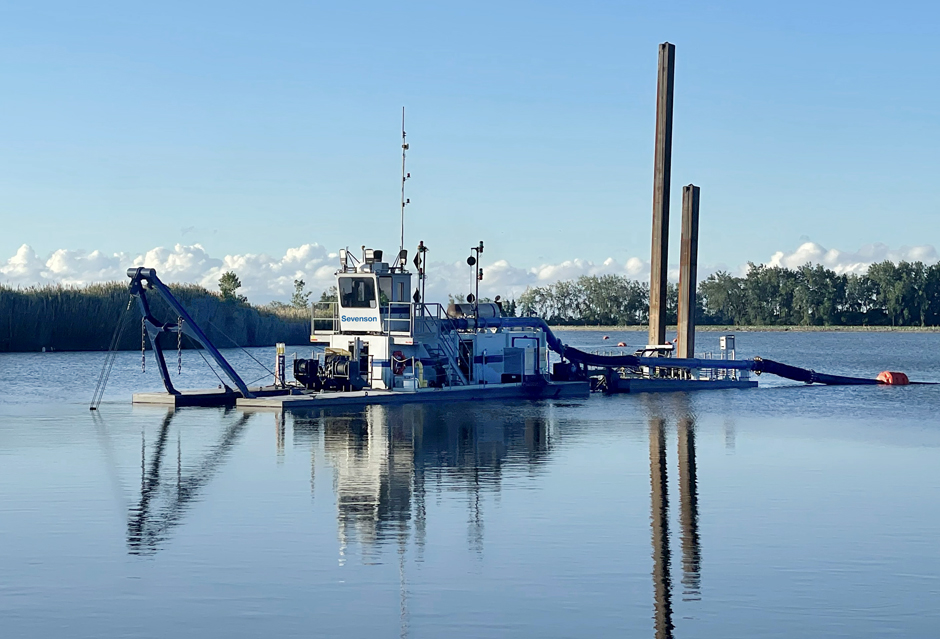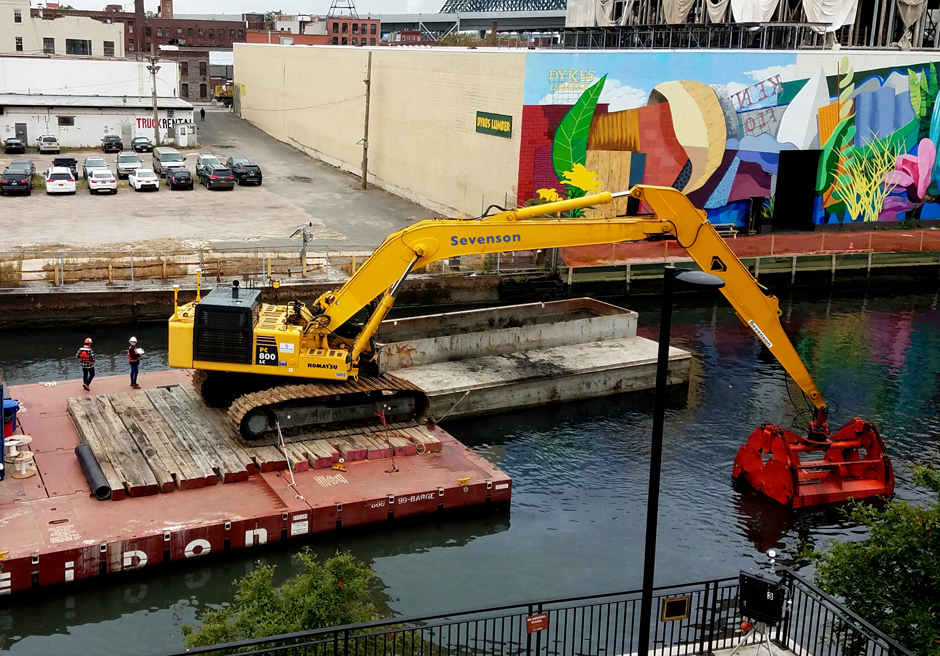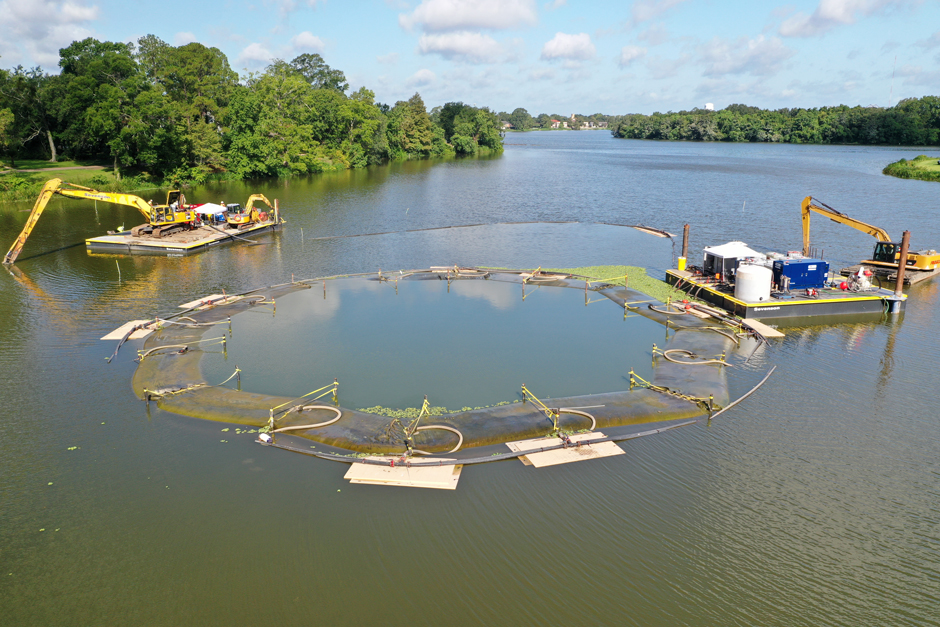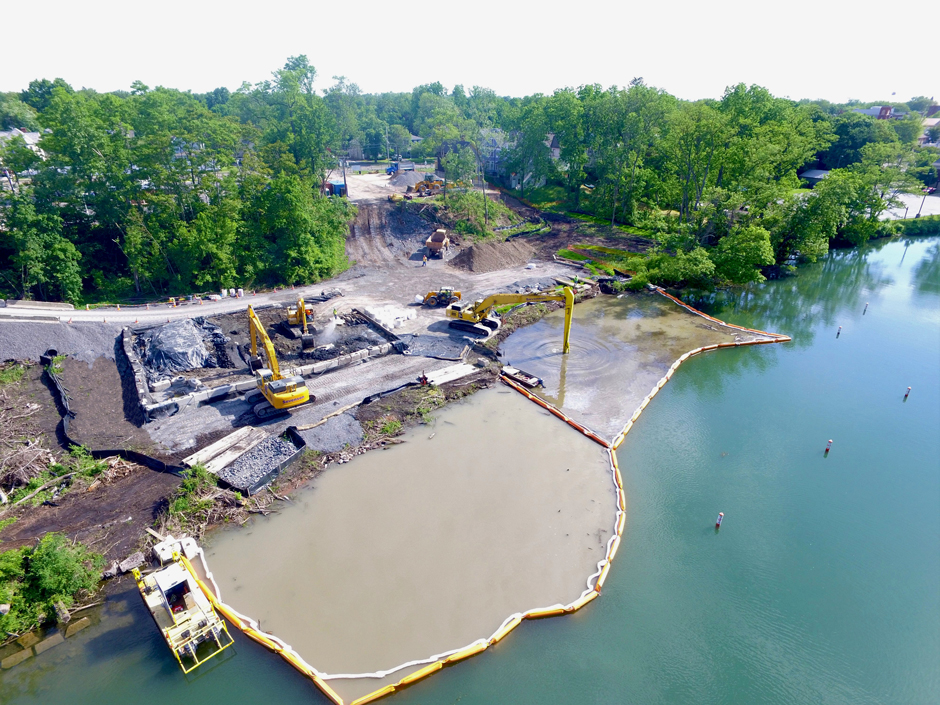Environmental Dredging and Remedial Construction
 (Credit: Sevenson)
(Credit: Sevenson)Though dredging is often painted in a negative light, dredging initiatives and projects are often conducted to improve environments, begin recovery periods for water beds contaminated with toxins, and reinvigorate ecological systems and habitats. Many of the technicians and engineers who plan and execute dredging projects are dedicated to balancing the economic benefits of dredging with protecting the environment.
Sevenson Environmental Services Inc. provides sediment remediation as one of many key services offered to help restore natural environments. Steven Shaw spent more than a decade working as an engineer on various dredging projects before finding his way to Sevenson eight years ago.
The work of companies like Sevenson has become increasingly more important as pollutants impact wildlife and communities living near and far from water. Toxic material can settle at the bottom of waterways like rivers, lakes, and ponds traveling through ecosystems and making environments unsafe. Lakes that were previously hospitable to a host of animal and vegetative life are no longer safe for swimming or fishing with declining aquatic populations.
Shaw explains, “Sevenson executes some of the most challenging environmental remediation projects around the country.” Shaw works as the Corporate Project Manager/Estimator for Sevenson and, as such, is tasked with completing estimates, designing constructability reviews, leading marketing initiatives and overseeing projects. Above all, Sevenson and Shaw prioritize the safety of people in all of their projects.
“Our sediment projects reduce risks to human health and the environment, often leading to the reopening of natural features of our country to recreational activities, such as swimming, boating and fishing, plus rejuvenating habitat for many plants and wildlife needed in our communities,” says Shaw.
Environmental Dredging
One example of the positives of environmental dredging is Onondaga Lake in New York State. The lake suffered greatly from the expulsion of mercury and other chemicals in the 1900s, which led to a build-up of toxic sediment in the lake bed that sat untouched for several decades until cleanup began in 2012.
The environmental dredging that followed helped begin a period of recovery for the lake’s ecosystem. Shaw explains, “Environmental dredging is the precision (or surgical-like) removal of contaminated sediments from water bodies to reduce risk to human health and the environment.”
Sevenson was part of the design and construction team and, after supporting dredging and capping treatability studies, deployed several dredges onto the lake to safely remove the contaminated sediment. The removal was successful and followed by a sediment cap that stabilized cleanup efforts. Sevenson’s work and the success of these remediation projects are evident as the lake is now open to swimming and recreational fishing.
Environmental dredging and remediation projects are “infinitely more complex than only the removal of sediments.” Shaw continues, “Projects typically also include water quality control, environmental monitoring, temporary wastewater treatment, sediment processing, transport and disposal, upland civil construction such as driving sheet pile for bank stabilization, emission and odor control, and a myriad of other issues.”

(Credit: Sevenson)
Sediment Remediation
Sediment remediation includes environmental dredging and the following care taken during projects. Shaw expands, “Sediment remediation reduces risks associated with impacted and contaminated sediments, but also includes monitored/enhanced natural recovery, capping, in-situ stabilization/treatment, and hybrid approaches which may include several of these methods.”
Sediment remediation projects typically begin when a “governing environmental agency determines that contaminant levels in a water body pose a significant risk to human health and/or the environment.” The reasons to begin a remediation project coincide directly with Sevenson’s prioritization of safety and restoration.
Without the work of companies like Sevenson, contaminated water would be lost to pollution. Shaw reminds that recovery is possible–he explains, “Sediment remediation is important to our communities in helping the associated habitats and waterways recover and be restored to productive use.” He continues, “Often, there is a ripple effect on the communities impacted by contaminated sediment and waterways, which can negatively influence the communities’ financial health and the well-being of its citizens.”
One can see the positive effects environmental dredging can provide simply by looking at the recovery of Onondaga Lake. Once impacted to the point where swimming and fishing were restricted, the community has now seen habitat revitalized, recreational fishing and swimming reestablished, and the redevelopment of shoreline properties, such as the Lake Amphitheater, occur.

(Credit: Sevenson)
Dredging Equipment and Processes
Once the need for a sediment remediation project is established, Sevenson begins the long and diligent process of planning and executing the work. While much of the work relies on equipment and time, there are two primary factors that must be considered.
The first objective is safety. Shaw states, “Remedial construction (particularly marine work) poses significant safety concerns and risk. Sevenson is fully committed to fulfilling our responsibility to protect the health and safety of company personnel, and the public, continually working to improve the corporate safety and health program.”
Most remediation projects entail the removal of toxic material, meaning that the dredging project must be attentive to properly managing contaminated dredged materials and avoid causing further damage to the environment or the surrounding community. Shaw expands, “In remedial construction, contractors are tasked with removing or confining contaminants which pose a risk to humans and or the environment – we certainly don’t want the ‘cure’ to cause additional ‘injury’.”
With decades of experience behind them, Sevenson’s dredging capabilities and experience include:
- Dry Excavation
- Mechanical Dredging
- Hydraulic Dredging
- Horizontal Auger Cutterhead Dredging
- Hybrid Precision Mechanical with Hydraulic Slurry
- Diver Assisted Dredging.
Sevenson implements a variety of Best Management Practices (BMPs) for its precision sediment excavation and dredging, focused on minimizing over-excavation. In order to avoid over-excavation, Sevenson completes a detailed review of project specifications and site conditions to ensure proper selection of sediment removal methodology and equipment; deploys the use of Sevenson key operators with over 10 years of environmental sediment excavation and dredging experience; ensures the implementation of machine control (GPS) on all excavators and dredges; conducts regular surveying to monitor progress, update machine guidance systems, and ensure grades and tolerances are being maintained; and executes a daily quality control plan to ensure machines are properly calibrated.

(Credit: Sevenson)
Conclusion
As the need for remedial construction continues, so will the evolution of the industry; for Shaw, this is the best part of the job. He shares, “Perhaps it is a little cliché, but the best part of my job is the people and relationships. The remedial construction industry is continually evolving, with new challenges, changing regulations, advancement in technology and tough competitors in the space.”
Sevenson is an excellent example of how a rapidly changing industry can lead to innovation and change in its participants. Shaw recalls, “Sevenson was founded in 1917 as a general building contractor and, after WWII, diversified into civil, highway, industrial, and commercial construction.”
Everything changed in 1979 when “Sevenson served as the principal contractor for remedial work at the Love Canal, which was our entry into remedial construction,” according to Shaw. An earlier project that involved dewatering the U.S. side of Niagara Falls in 1969 due to safety issues associated with the park system allowed Sevenson to make a name for itself in the remedial construction world, followed by many other projects throughout the 1980s.
However, involvement in the Love Canal project solidified the company as a leading provider of self-performed remedial action services. Shaw believes that Sevenson’s ability to adapt to the market led to the company’s success today. He adds, “It was innovation that yielded our entry into remedial construction, maintained our industry position and reputation over the past 40-plus years, and continues to shape our future.”




Michael Van Aalst
October 28, 2022 at 5:20 am
Worked with your people at Pratt Whitney San Jose Very Knowledgeable
marine services
July 21, 2024 at 9:42 am
Regular dredging ensures that ports remain functional and can expand to accommodate growing maritime traffic and larger ships.